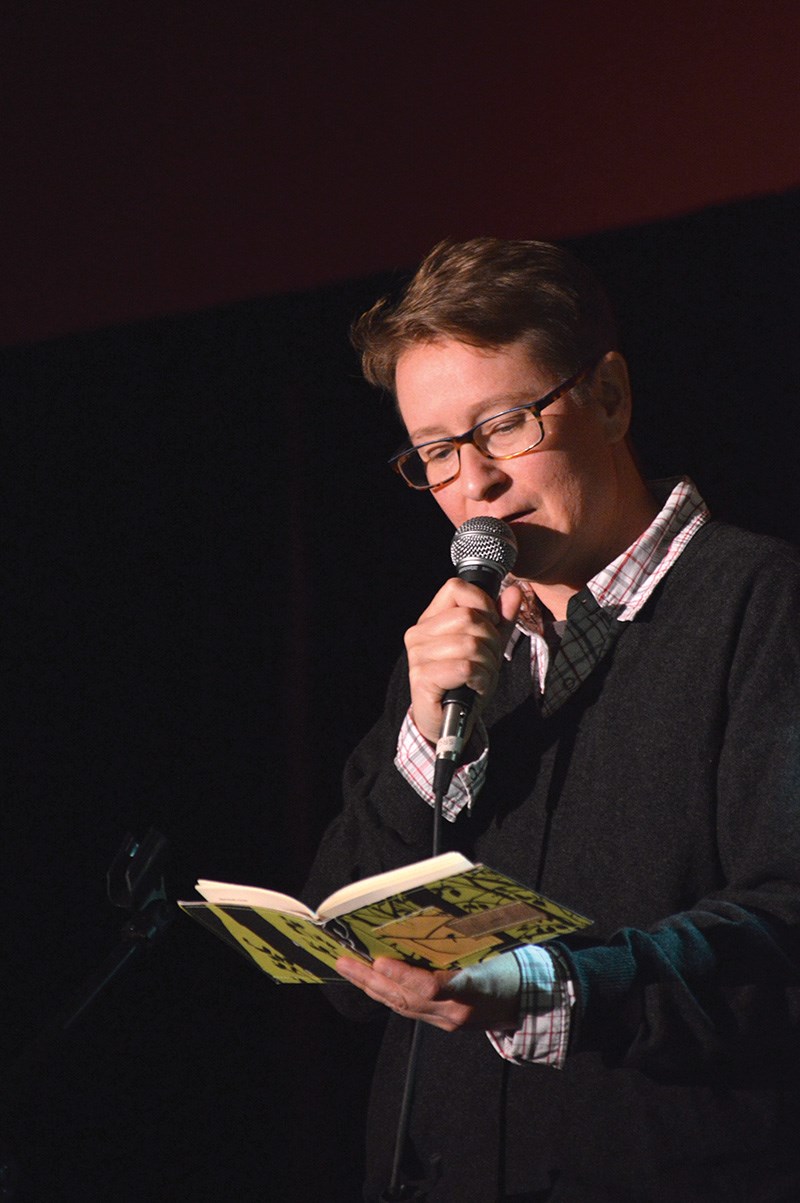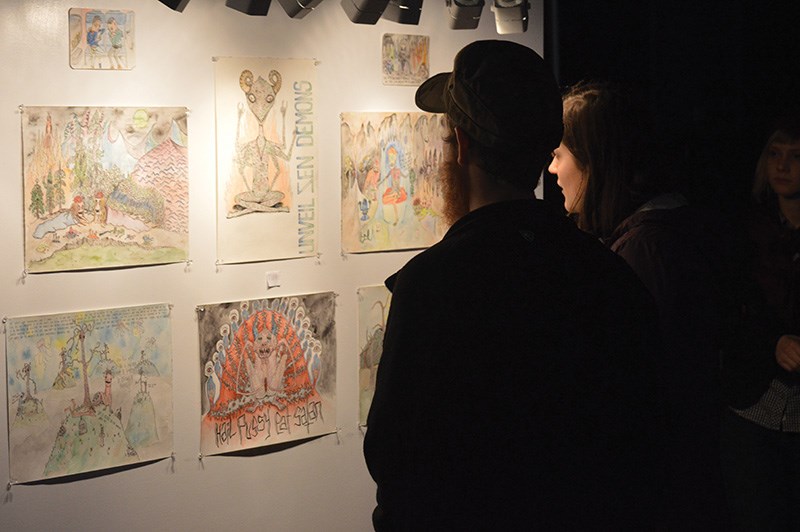The role and importance of art for lesbian, gay, bisexual, trans, queer, intersex and asexual (LGBTQIA) people was up for discussion Saturday at Queering Art.
Queering Art, presented by North West Winter Fest, includes collage, ink, pencil, painting and mixed media artworks curated by Quest alumnus Grace Salisbury and on display at Quest University. After people had the chance to wander about looking at the artworks, several artists gave talks about their work or read from their writings.
Writer Jessamyn Smyth read a piece she composed for the event, which consisted of several “postcards,” which moved from memories of things read or past loves to broader questions of the role of art.
She said that while some LGBTQIA people have gained a sense of safety in the wider community in recent years, others have not. She added that often, current queer art sends a message that they are the same as everyone else. “That was never supposed to be the end goal, was it?” she asked. “What gives us hope is that we’re not all the same.”
Writer Anne Fielding followed with a reading from an upcoming chapbook of poems. If some were humourous, others recalled painful experiences such as being told by a hairdresser that she had long hair for a boy, that she was using the wrong washroom or that Anne was a funny name for a boy.
After Fielding, performer Scott Turner Schofield, the first openly transgender actor on daytime TV, spoke of the experience of being transgender, chronicling a life of rejection and attempts to feel better through drinking, drugs or sex before a life transformation in India through yoga practice.
Finally, Salisbury discussed her own life struggles as well as the importance of finding queer people for support and of art in reminding herself of the beauty in the world.
Among the topics during the question-and-answer period that followed the presentations and readings was how queer art can or should fit into the mainstream.
Fielding, who has written three books of fiction, discussed how in the real world, people are not able to experience the world through someone else, but through stories it becomes possible.
“It’s this weird illusion of fiction,” she said. “You have more empathy for more people…. It just kind of carries from there.”
Another question centred on how the panelists felt about being identified as “queer art.”
Schofield talked about how at one time when he put on trans performances, everyone from the queer community would come to give support, but more recently, the audience had become splintered, falling away to leave only a few allies for trans people.
Fielding expanded the dilemma that queer artists face. Her writing has been published by publishers that some would consider mainstream.
“When I started putting my work out, I wanted to be read as widely as possible,” she said.
At present, she added, there are more opportunities to be a queer artist in the mainstream, yet she recognized that she had help from sources outside the mainstream such as feminist bookstores.
While she wishes to be better known in her community, she added, “I also worry about not finding an audience beyond the queer community.”




